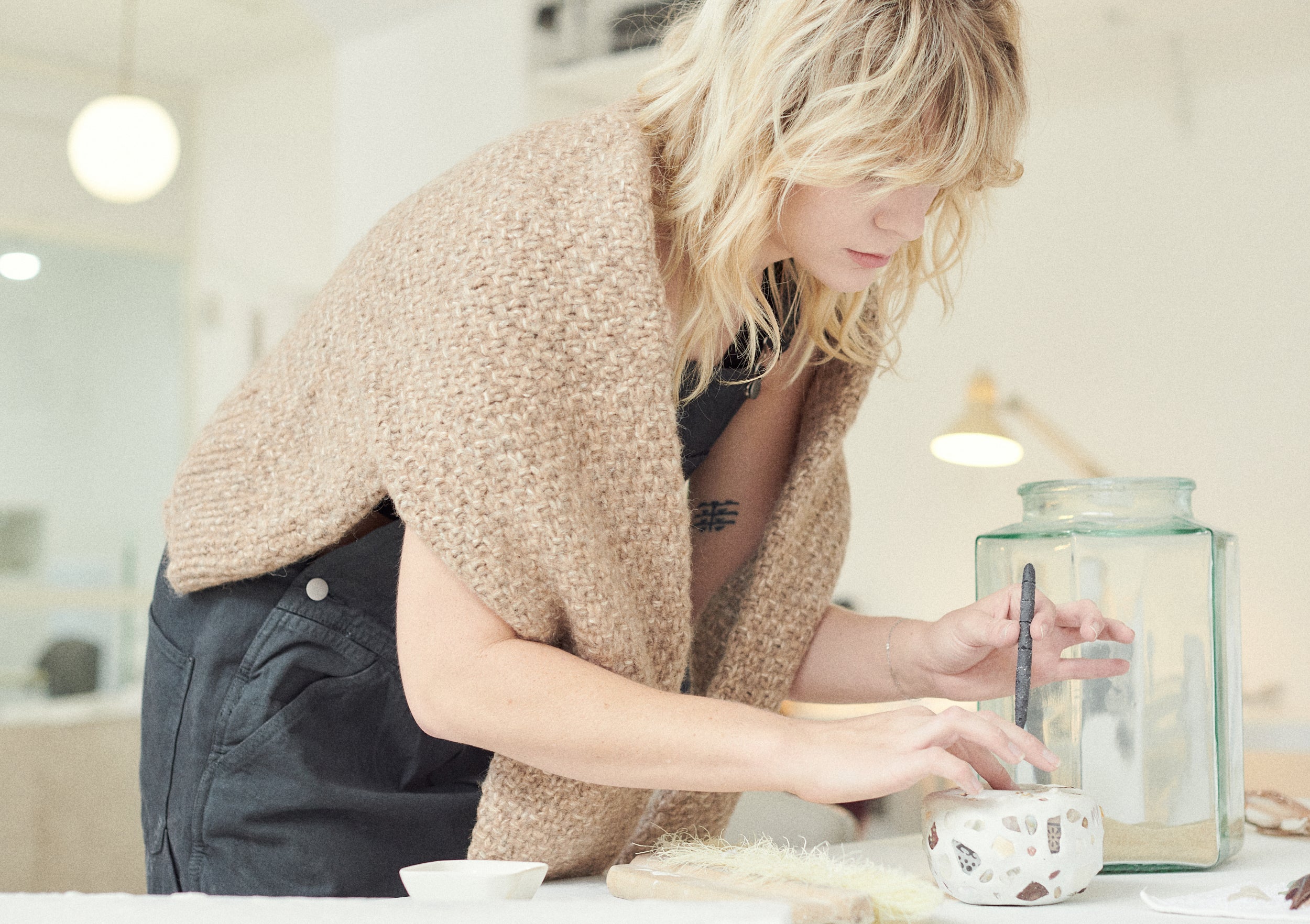[row-image-text]
[image]

Maxine wears the Gia Sweater in Birch.
[end]
[text]
There is an archeological sense to your work and you often work with found ceramics, jewels, shells, and precious metals. How is working with cloth— something more ephemeral— for you?
Archeological in a metaphorical sense—the uncovering, bringing an object to surface and to light through reuse and reinterpretation. I’ve always been drawn to textiles. Similar to ceramics, it was one of the earliest art forms guided by necessity, so in many ways it doesn’t feel different at all. Incorporating this delicate material into my mosaic work is difficult and time consuming but the result feels precious and worthwhile.
Organic, opulent, or surrealistic are rarely words applied to workhouse objects of daily use, yet your pieces are both quotidian and psychedelic. What is the difference, for you, between an objet d'art and an objet utilitaire?
Utilitarian objects let function inform the design, objet d’art let aesthetics inform the design. I’m interested in the space between. Objects we bring into our lives because we are drawn to them visually or by the way they make us feel, communicate our taste and curiosity, and thus serve a function in our lives as well. The pieces we create for Memor will never be meant to replace the practical, and are not the most straightforward means to an end for a functional object. Instead they are meant to serve as conversation pieces, not immediately obvious to the eye, that ask the beholder to engage from a place of curiosity or lightheartedness.
How do you want to feel in your clothes?
I want to feel integrated, like my clothes are reflecting how I'm feeling or what I'm inspired by in that moment in time.
[end]
[endrow]

Maxine wears the Reva Tank, Cara Straight Jean, and 1930's Bandana in Ash.

[row-image]
[image]
[end]
[endrow]
[row-image-text]
[image]

Maxine wears the Sloan Cardigan in Root and Utility Pant.
[end]
[text]
How does that inform your personal style?
My personal style isn’t defined by a specific look. Whether it’s what I wear, bring into my home, or create, I just choose pieces I’m drawn to. I love interesting texture, exaggerated shapes, the imperfect, handmade, or one off pieces that feel experimental.
We love the sense of unique wholeness that comes with your work, a sense of coherence brought together out of brokenness. What do you want your pieces to tell us about balancing wholeness, utility, and/or beauty?
I like holding two opposite ideas at once. I want the fragments and imperfection of the work to gently push back on our culture of perfectionism in silent rebellion.
What brings you joy in the present? What are you dreaming about for the future?
I’m finding joy in infusing humor and playfulness into what I create and connecting with those I encounter along the way. I’m dreaming of creating space and moments IRL for deeper connection with my community of online supporters and collaborators in the near future.
View our limited edition collaboration with Maxine and Memor Studio here.
Follow Memor Studio on Instagram here, and explore more of Maxine's creations here. Photos by Egan Parks.
Shop Maxine's OZMA picks here.
[end]
[text]
[share]
[end]
[endrow]

